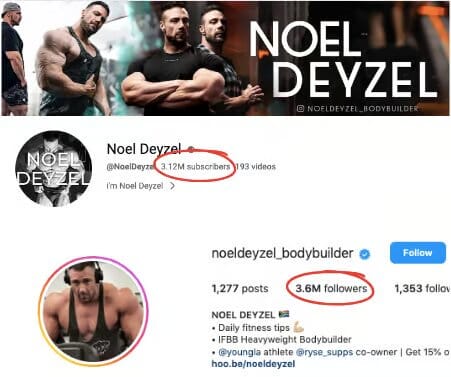How social media is warping your clients’ brains & what to do about it.
A recent CDC report revealed that 60% of teen girls experience persistent feelings of sadness or hopelessness, and 30% consider attempting suicide.
The big (rhetorical) question is why?
The social dilemma
The report suggested that pandemic-era stressors like social isolation are to blame. Anxiety and depression rose by 25% within the first year of the pandemic alone.
But it’s not the full picture – many experts believe the crisis started before COVID.
Venture capitalist Paul Graham tweeted his hypothesis:
Trends in mental health problems among US women and girls, 2001 to 2018. It's so obvious that something changed, and we all know what it is. pic.twitter.com/53yz7EyJZE
— Paul Graham (@paulg) March 2, 2023
The culprit: social media.
On average, teens spend about 8 hours a day on their phones, and 35% claim they use social media “constantly.”
In an era where connecting with others is instantaneous & more convenient, it’s ironic that they’re lonelier than ever.

Also, most major apps have filters for face-tuning & editing photos that make it hard to tell what’s real or not.
I don't wanna be known as the tiktok filter guy, but ICYMI after attacking GenX w teenage filter, tiktok just dropped a new filter to take out Millennials & GenZ. "Beauty filters" are not new, but the precision on this is beyond uncanny. This is psychological warfare & pure evil. pic.twitter.com/2G2FeMfrTC
— memo akten (@memotv) February 26, 2023
A study in the UK found that 1 in 4 girls and 1 in 10 boys aged 13 to 19 edit their images because of poor body image.
So why is this happening?
Social media rewards extremes
In tennis, the best player in the world makes 1,000x more than the 100th-best player.
Social media is similar. Category winners make exponentially more than B or C-level influencers.
This incentivizes extreme behavior and extreme physiques.
As long as fitness influencers like Daddy Noel are making millions from their followers, there will be copycats trying to get bigger, stronger, and more extreme.

If you’re a normal person seeking fitness advice, your feed will be inundated with naturally unattainable physiques—which can be demotivating or even depressing. So much so that media outlets like the Washington Post are showing people how to block fitness content from their feeds:
But the Post isn’t the only outlet waging war on fitfluencers.
Introducing: de-influencing
De-influencers counteract the unrealistic lifestyles portrayed by influencers.
People like Kenny Ko and John Dorsey have built large followings by exposing the truth behind your favorite fitfluencer.
The market for exposing bullshit in the fitness industry is large. The subreddit r/gymsnark has nearly 74K members that gossip about popular fitness influencers.
Why should you care?
In 2015 I ran a nutrition challenge at one of my gyms. I was coaching a guy that worked a desk job & was around 30% body fat.
I asked him what his 3-month goal was. He sent me this:


It’s easy to forget that our clients are as tuned in to the realities of the fitness industry as we are.
I was reminded of this when the general population was shocked that Liver King wasn’t natty.
Luckily you can build a large audience and a successful business by fighting nonsense in the fitness industry.
Mike Doehla, the founder of Stronger U Nutrition, got 50,000 nutrition clients by helping people cut through the noise.
While you need to be extreme to succeed on social, you can do that by being extremely trustworthy, extremely helpful, or extremely smart.
The anti-anti-influencer
Speaking of extremes, remember “Relentless Tony” and his $10M influencer gym? We talk about its crazy opening day on this week’s Gym World:






